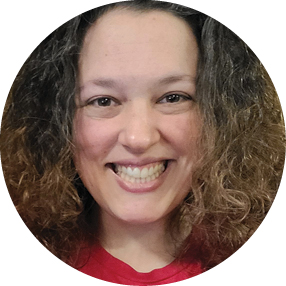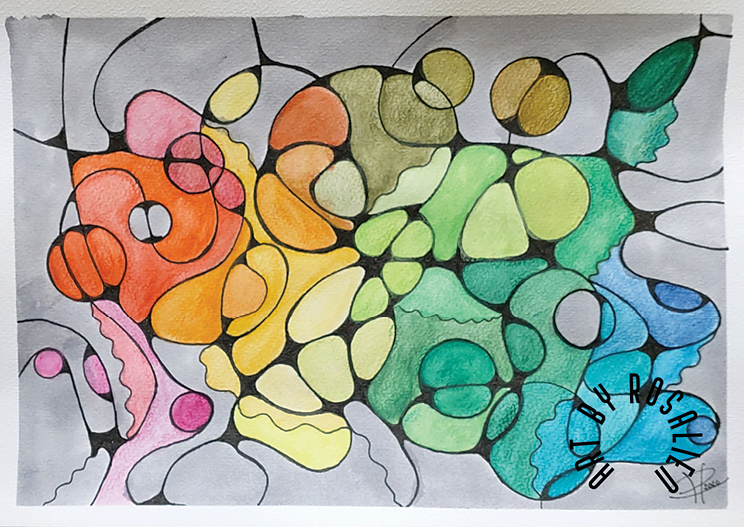Breakthroughs: When Doodling Becomes Therapy

Gayle Kraus is a veteran middle school visual arts teacher at Piccowaxen Middle School in Charles County. Her mantra is that art stimulates the mind to see new worlds and possibilities and is a pathway to meditation and self-healing.
For pandemic recovery and beyond, we are seeking and discovering new ways to de-stress, de-escalate, and express ourselves. Now you can add doodling to your self-care toolkit.
This pandemic has been challenging for everyone. Life as we knew it has drastically changed—personally and professionally. Hot to cold in the blink of an eye! I have attended endless local, national, and international professional developments encouraging us to take time for ourselves. Easier said than done. Our brains are overstimulated and stretched to the maximum, and our bodies ache as we are glued to computer screens and chairs. Our environments as we knew them have changed and our personal and professional lines have blurred or been totally erased.
When learning the ins and outs of this new normal, I referenced back to all the professional development I attended where the common thread was mindfulness and meditation. As an art teacher, I take advantage of the same art therapy moments I provide for my students. I tell them that the technology I prefer is a pencil and paper, with the advanced technology of markers, pens, ink, paint, crayon, pastels, and other creative tools.
What I do best with these tools is doodling. It helps me focus, calm down, think, process, and be expressive. Doodling is my preferred meditation. I know many educators may not think much of doodling, but research shows that it is a very useful tool for all—no matter the profession or age—to focus, express, and de-stress.

I have translated many fun pre-pandemic art therapy assignments to the virtual platform, including affirmation reflections, creative art journaling, Zentangling, mandalas, and more. While researching ways to teach art virtually, I discovered an article about Neurographica at tanglepatterns.com.
Neurographica is a process where your conscious meets your subconscious. I was so curious about it! I watched videos, read articles, and created art. I am not certified in Neurographica and I am not a psychologist, but the process is so intriguing that I thought, like Zentangling, I could teach this to my students as another way to manage stress and express themselves by connecting to their artwork on a more personal level.
I use many art terms to make it fit the curriculum: positive/negative space, color theory, organic/geometric shapes, and line variation. Not only did the students excel in this activity, but they HIGHLY recommended that I start the second semester with this project. For anyone teaching middle school this is HUGE. As a bonus, I received word from parents/guardians that their children were teaching them and/or their siblings the process and how effective it was!
After this success, I contacted my supervisor and a fellow art teacher in Charles County about presenting during a mindfulness session—a training offered to all fine and performing arts teachers. There were many educators who were surprised and happy with the process. I brought it to my union, the Education Association of Charles County, where it was recommended that I hold an art therapy session for an early career educator event. It was another success and teachers found themselves calmed by the process and proud of what they had created.
We must remember to take time to focus on ourselves. Working with technology all hours of the day, and the resulting lack of sleep because our brains can’t shut off, is not healthy. Using a simple doodling exercise to help your conscious and subconscious meet is healthy and necessary. Remember, doodling is a healthy and effective coping and de-stressing exercise!

